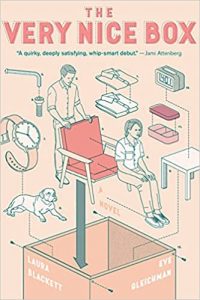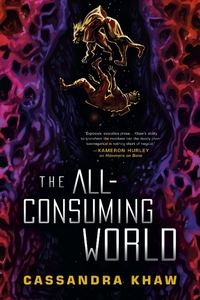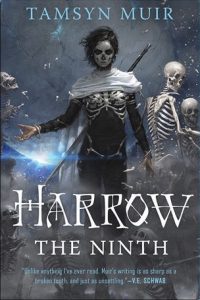Amazon Affiliate Link | Bookshop.org Affiliate Link
I first came across this book when I was looking for a Christmas gift, and even though it didn’t quite fit the gift idea that I had in mind, I knew that I had to read this book. Finna is an absurd little story that perfectly encapsulates the feeling of working a low wage corporate retail job. The plot is simple: Ava and Jules work in definitely not IKEA, and a shopper’s grandmother has wandered off into a wormhole and gotten lost in the maze of multidimensional Scandinavian furniture store hell. Their supervisor sends them after her. Also, they just broke up.
The premise is a little ridiculous, but it feels totally plausible. Of course corporate downsizing eliminated specialized teams who used to handle interdimensional recovery! When has any large corporation cared about the safety of their workers? And training naturally consists of watching a single VHS tape that was filmed decades prior, before you’re expected to just…do whatever it is the company needs you to do. Capitalism is bleak, but we live in it, and we have to play by its rules. Some people, like the manager, embrace these rules because they think that playing by the rules will get them somewhere. Others, like the main duo, are just trying to get by, and try their best to create the best out of a bad situation.
This brings me to the relationship between Ava and Jules. As readers, we come into the relationship at its worst. Ava is anxious and overbearing, constantly thinking of how things can go wrong and trying to mitigate every possible disaster. This includes managing Jules, who is adamant about being their own person, despite the soul crushing job and their difficult past. The relationship wasn’t an inherently bad one: Jules managed to ease some of Ava’s tension, while Ava was more on top of things like dishes. But Ava’s need to fix anything grated on Jules’ desire for independence, and their reluctance to open up just made her worry harder. I really appreciated how there wasn’t any blame or fault assigned to the breakup, it was just a bad thing that had happened. But we also see the good parts of their relationship, how they started as work friends with fun little injokes, the kind of bonding that only happens in work situations. Their relationship is probably the reason why they both stayed in the bad job in the first place, and it made a bad situation bearable. And sometimes, what you need to work out your problems is some quality time together to talk about your feelings, while also escaping carnivorous chair plants and fighting off creepy clones.
This book was fun, and also really heartfelt. It’s about deciding what’s really important and the kind of people you want to spend time with in your life. It’s about queer love and the many forms that can take. There’s so much packed into such a little package, and even more that I haven’t touched on here. I had a hard time putting it down, which meant it was good that it wasn’t that long, because I wouldn’t have been able to get anything done if it was any longer!




